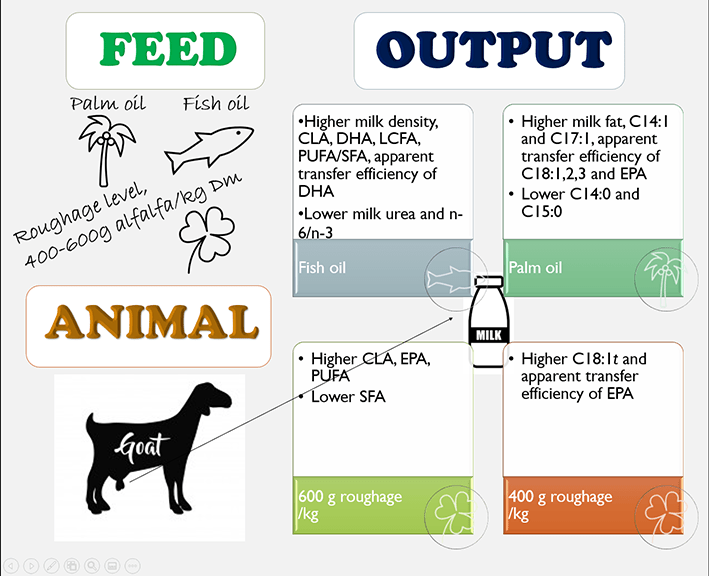Goat milk fatty acid composition can be improved with high forage ratio and fish oil in the diet
Goat milk is thought to be more beneficial than other milk: it’s easier to digest because it contains more short-chain fatty acids, lower lactose and more conjugated linoleic acid (CLA). CLA is known to be anti-carcinogenic, with anti-catabolic and antioxidant characteristics. In recent years especially, experts report that increasing cancer rates are caused by disorders in the diet. Therefore, it is important to manufacture human diets from healthier foods. However, since our diet is difficult to change, it’s more convenient to improve the quality of existing foods. It’s also known that the easiest and most effective way to increase the quality of animal-derived foods is through changes in the animals’ diet.
Therefore, in the current study we set out to discover ways to improve the quality of goat milk. We tested fish (salmon) oil, which is a quality oil source, with different roughage rates in order to better understand its effect in the rumen. In the group fed a low roughage and fish oil diet, we had to offer two animals a choice of feed in the first week, as the unfamiliar smell of the fish oil led to refusals. However, after the first week they got used to it and ate the diet with fish oil quite happily. Since the individual feed consumption and milk yields were monitored, the measurement and statistical evaluation of the apparent transfer efficacy of fatty acids in milk with feed consumption in milk were worthy of highlighting.

Our study identified that fish oil increased the ratio of CLA, DHA (n-3 fatty acid, docosahexaenoic acid) and other long chain fatty acids in milk without affecting performance. It also improved the polyunsaturated/saturated fatty acid ratio as well as the n-6 / n-3 fatty acid ratio. The diet with a high rate of roughage increased the ratio of CLA and EPA in milk. The interaction of fat source and roughage ratio in many of the parameters we looked at showed the importance of roughage level in determining the effect of fat sources on milk fatty acid profile.
The article “The effects of dietary lipids and roughage level on dairy goat performance, milk physicochemical composition, apparent transfer efficiency and biohydrogenation rate of milk fatty acids” by S. Büyükkılıç Beyzi, M. Gorgulu, H. R. Kutlu and Y. Konca was published in The Journal of Agricultural Science and is available free for a month.






